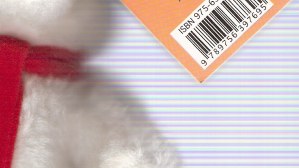  The material of money must not only be valuable, but the value must be so related to the weight and bulk of the material, that the money shall not be inconveniently heavy on the one hand, nor inconveniently minute on the other. There was a tradition in Greece that Lycurgus obliged the Lacedæmonians to use iron money, in order that its weight might deter them from overmuch trading. However this may be, it is certain that iron money could not be used in cash payments at the present day, since a penny would weigh about a pound, and instead of a five-pound note, we should have to deliver a ton of iron. During the last century copper was actually used as the chief medium of exchange in Sweden; and merchants had to take a wheelbarrow with them when they went to receive payments in copper dalers. Many of the substances used as currency in former times must have been sadly wanting in portability. Oxen and sheep, indeed, would transport themselves on their own legs; but corn, skins, oil, nuts, almonds, etc., though in several respects forming fair currency, would be intolerably bulky and troublesome to transfer.
 The portability of money is an important quality not merely because it enables the owner to carry small sums in the pocket without trouble, but because large sums can be transferred from place to place, or from continent to continent, at little cost. The result is to secure an approximate uniformity in the value of money in all parts of the world. A substance which is very heavy and bulky in proportion to value, like corn or coal, may be very scarce in one place and over-abundant in another; yet the supply and demand cannot be equalised without great expense in carriage. The cost of conveying gold or silver from London to Paris, including insurance, is only about four-tenths of one per cent.; and between the most distant parts of the world it does not exceed from 2 to 3 per cent.
 Substances may be too valuable as well as too cheap, so that for ordinary transactions it would be necessary to call in the aid of the microscope and the chemical balance. Diamonds, apart from other objections, would be far too valuable for small transactions. The value of such stones is said to vary as the square of the weight, so that we cannot institute any exact comparison with metals of which the value is simply proportional to the weight. But taking a one-carat diamond (four grains) as worth £15, we find it is, weight for weight, 460 times as valuable as gold. There are several rare metals, such as iridium and osmium, which would likewise be far too valuable to circulate. Even gold and silver are too costly for small currency. A silver penny now weighs 7 1/4 grains, and a gold penny would weigh only half a grain. The pretty octagonal quarter-dollar tokens circulated in California are the smallest gold coins I have seen, weighing less than four grains each, and are so thin that they can almost be blown away.
 |